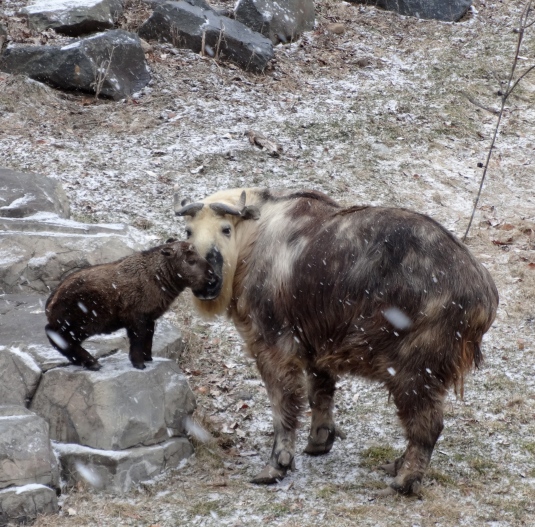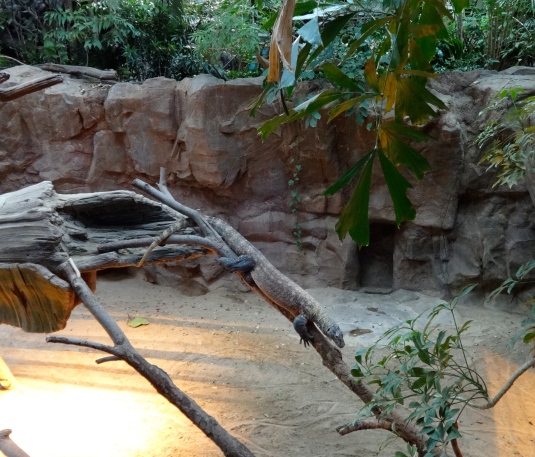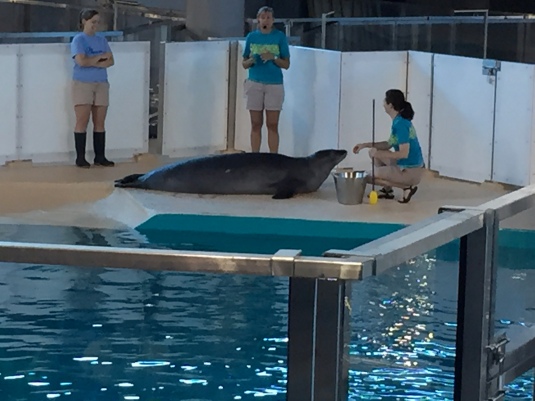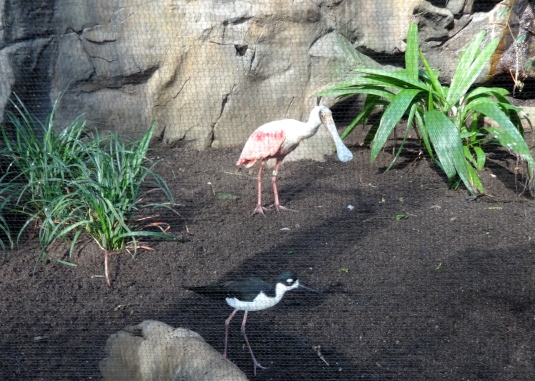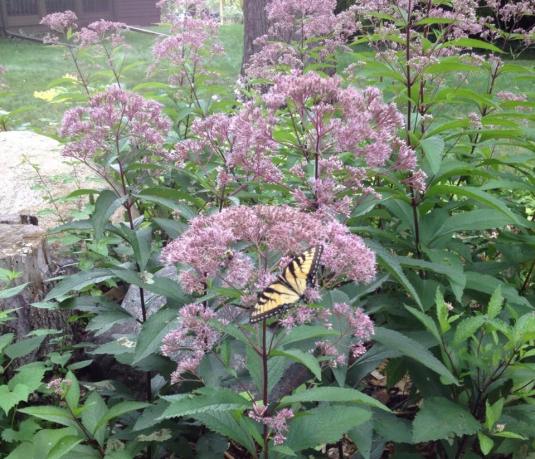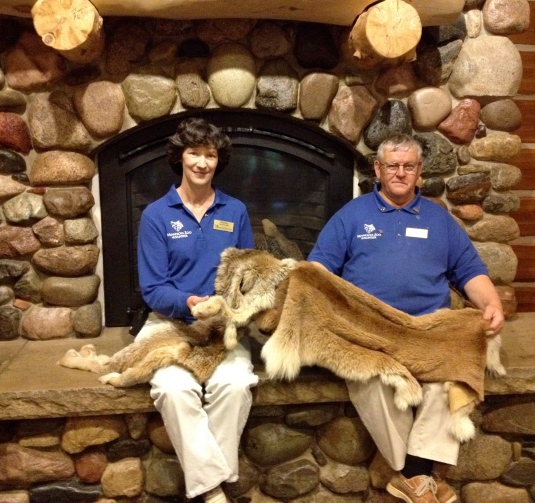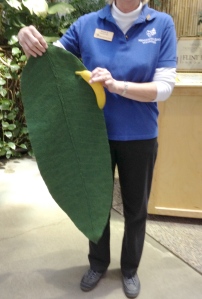In recent months, the zoo has welcomed a small batch of unusual warm-blooded fur-babies, including a binturong, or bearcat, not yet on exhibit and a tapir, now nine months old and looking like a smaller, feistier adult. But the latest one, a takin born Feb. 4, is the current show-stopper, especially since she went on public view after just three weeks and likes to do cute things like scamper around the exhibit, attempt to mountain-climb her dad’s belly while he’s trying to nap, and nuzzle her mom’s face.
The second time I saw her, last week, she was more than a month old and cavorting in a light snowfall (and yes, as we see here, nuzzling). Sichuan takins — it’s pronounced TAH-kin — are related to the mountain goat and musk ox. Adults weigh about 600 pounds on average. This little one’s name, I learned at last weekend’s volunteer update seminar, is Bing Leng, which fits the species’ Chinese heritage. Sichuan takins, the most common variety in zoos, hail from the country’s forested mountains. Like the giant panda, takins have been declared a national treasure worthy of protection in China, and the two species share an overlapping habitat in the wild. As large animals that live in herds at high elevations, they have few predators, but hunting and habitat loss mean they’re classified as threatened — a step down from endangered. In human care, they can live up to 20 years.
Bing Leng has been exploring the exhibit, and testing her climbing skills, under the supervision of her parents and a fourth, female takin named Mu Shi, who’s -a 3-year-old recent arrival from San Diego with breeding prospects of her own. Bing Leng’s transformation will continue as her hair lightens in the next few weeks and she starts sprouting horns at six months. As spring arrives on the Northern Trail, it will be increasingly fun to watch.

